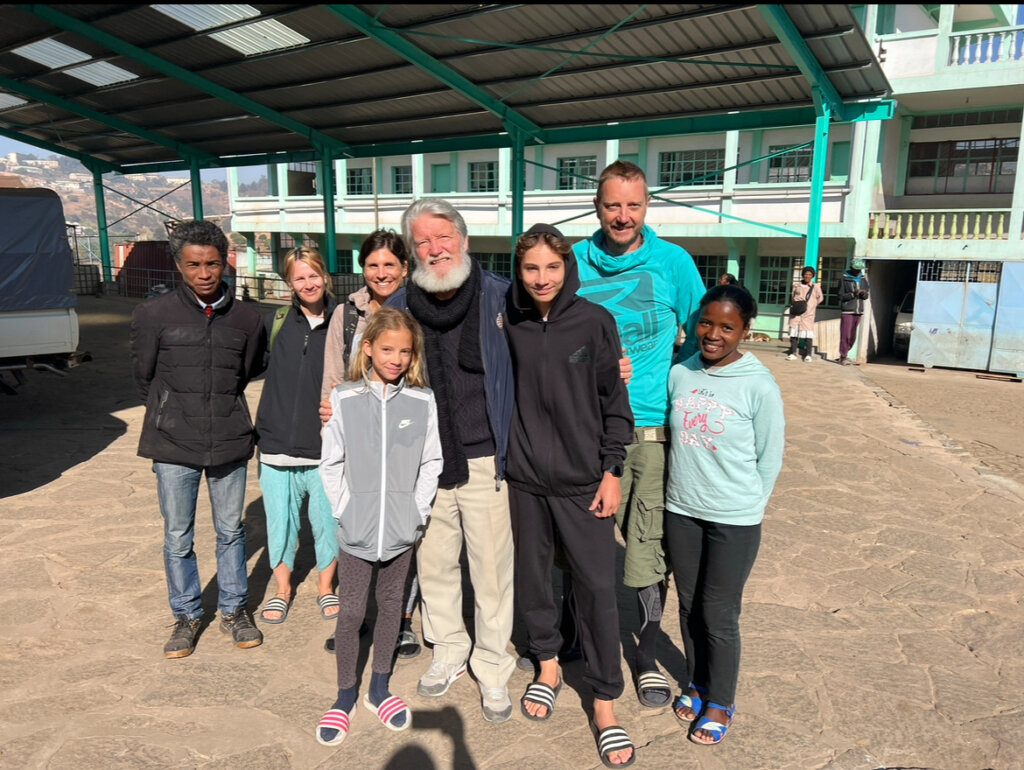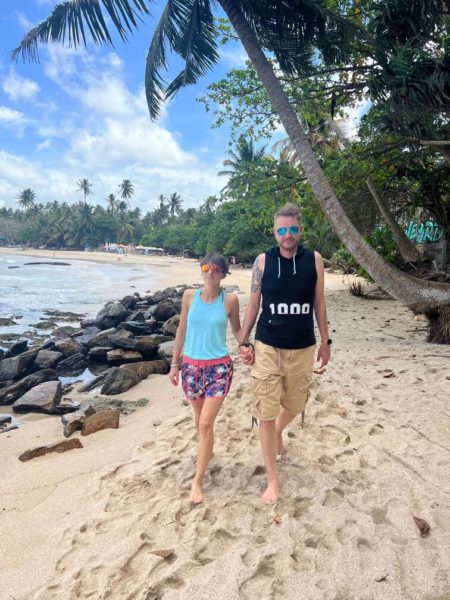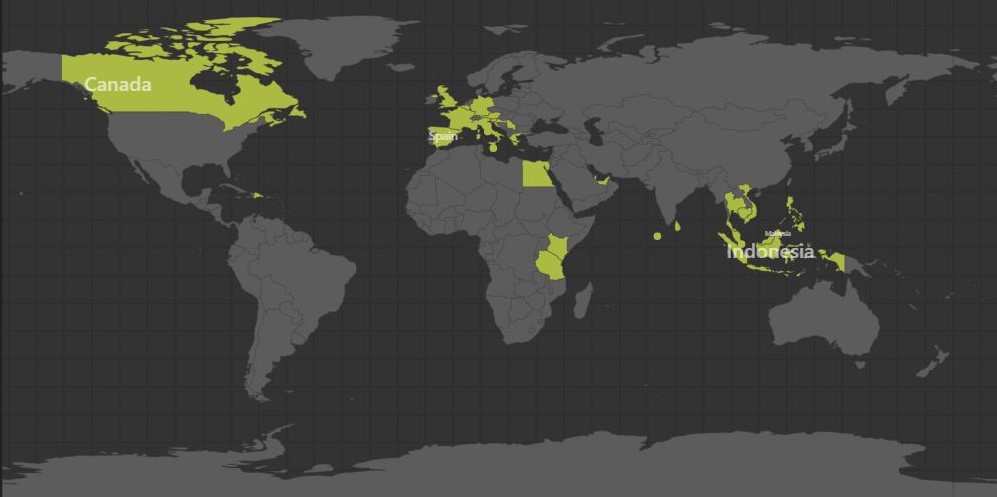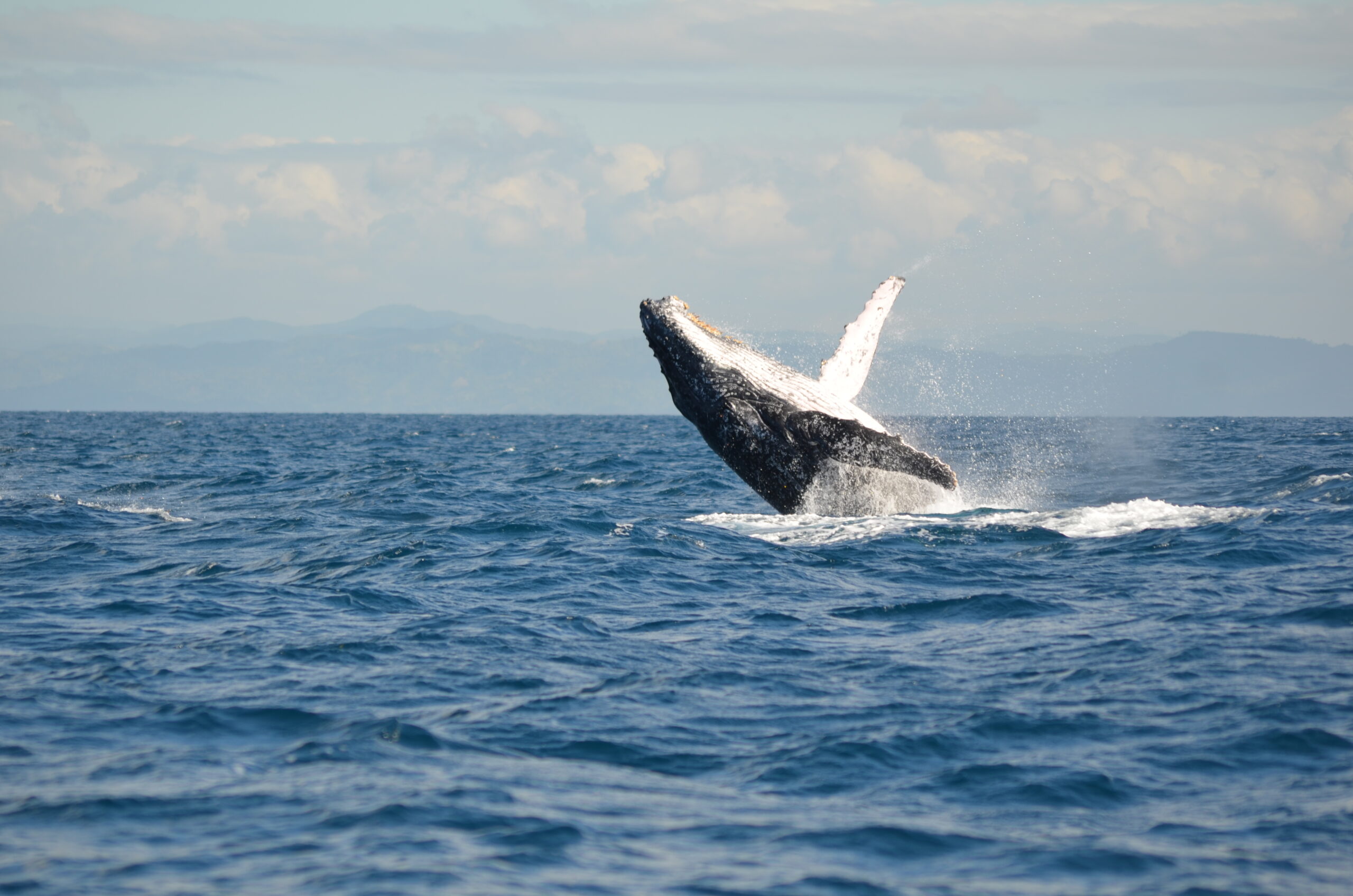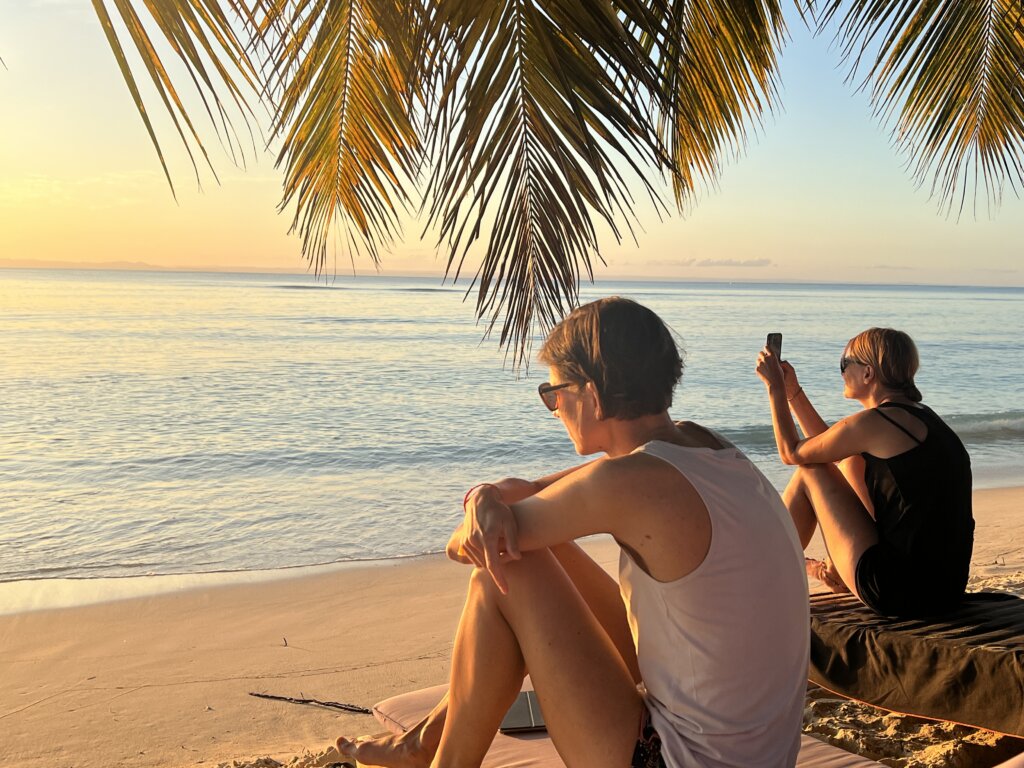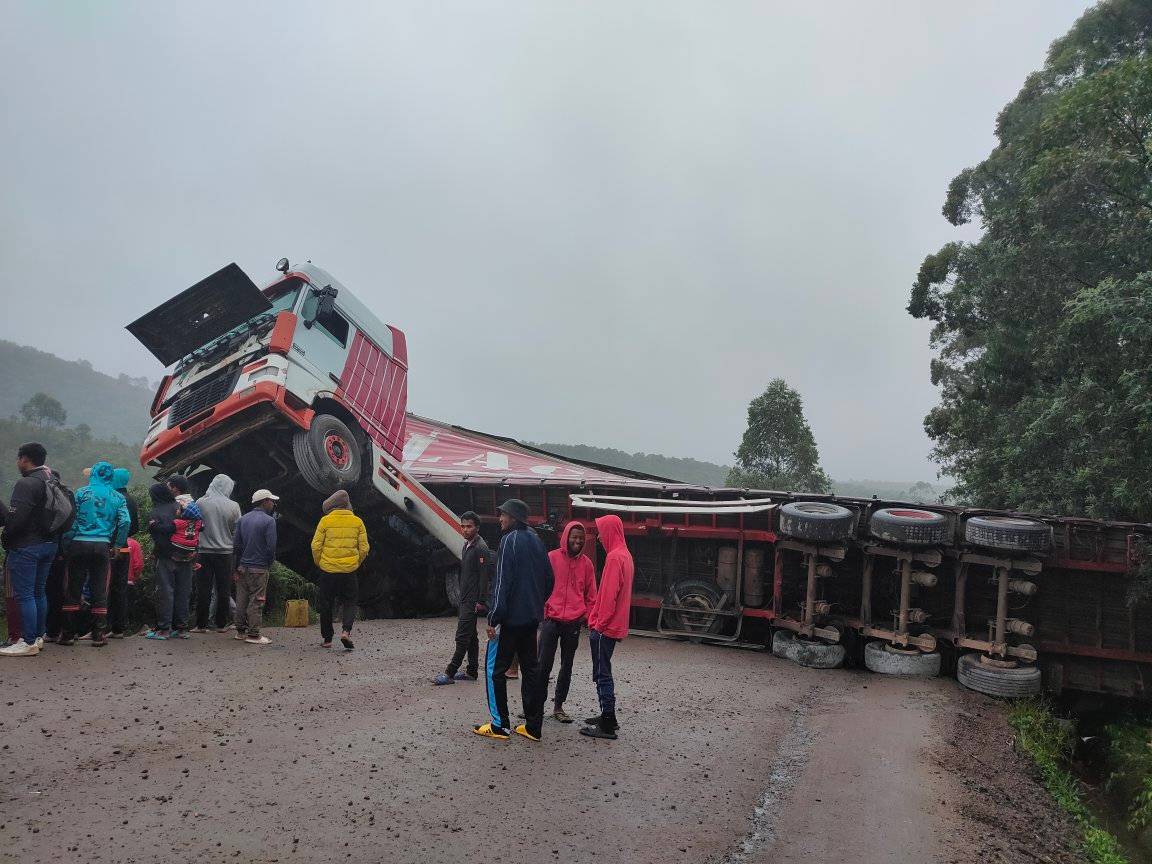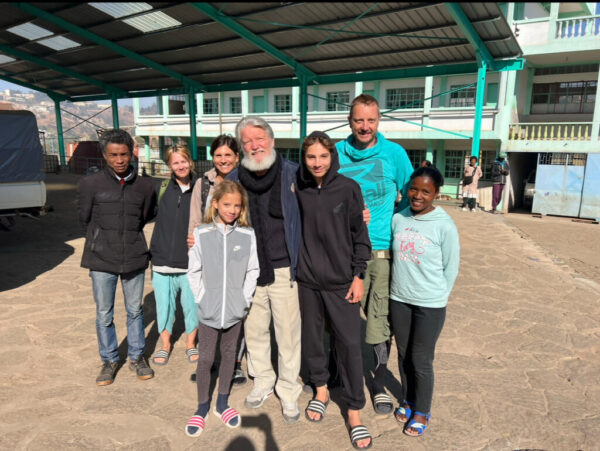Returning to Antananarivo: After an incredible journey around Madagascar, we found ourselves back in Antananarivo for a brief two-day stay before heading home to Slovenia. While our time in the capital was short, it was packed with unforgettable experiences, including a visit to Akamasoa, where we met our countryman Pedro Opeka, and an exploration of the historic Rova of Antananarivo. Here’s a glimpse of our whirlwind visit, complete with tips for making the most of your time in this bustling city.
Table of Contents
ToggleHeartwarming Visit to Akamasoa
Our first day in Antananarivo was dedicated to visiting Akamasoa, a remarkable community initiative founded by Father Pedro Opeka, a fellow Slovenian who has devoted his life to helping the poor in Madagascar. Akamasoa, meaning “Good Friends,” is a beacon of hope for many, transforming the lives of thousands through education, housing, and employment opportunities.
The Akamasoa Experience:
Upon arriving at Akamasoa, we were immediately struck by the vibrant and positive atmosphere. The community is a stark contrast to the surrounding areas, with its well-kept houses, schools, and clinics. Meeting Father Pedro Opeka was a humbling experience. His dedication and passion for the people of Madagascar are truly inspiring. He shared stories of the challenges and triumphs the community has faced and gave us a tour of the facilities, where we saw firsthand the impact of his work. He was so open to talking to us and we talked about our trip in Slovenian language.
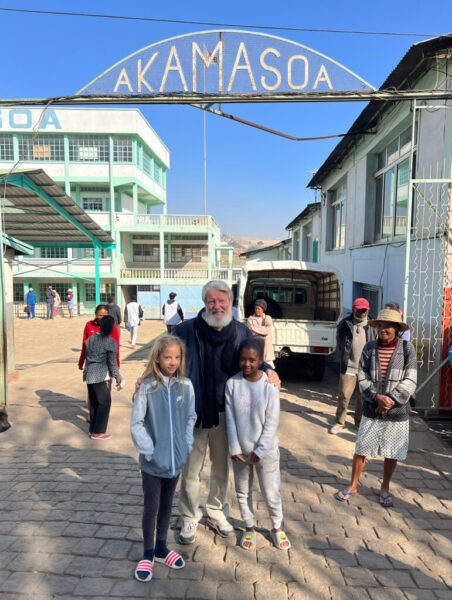
✓ Tip:
If you’re planning to visit Akamasoa, consider bringing donations such as school supplies or clothing. The community relies heavily on support from visitors, and even small contributions can make a big difference.
Exploring Antananarivo
The Rova of Antananarivo – Le Palais de la Reine
In the afternoon, we set out to explore one of Antananarivo’s most iconic landmarks—the Rova of Antananarivo. Perched on the highest hill in the city, this historic royal complex offers a glimpse into Madagascar’s rich cultural heritage.
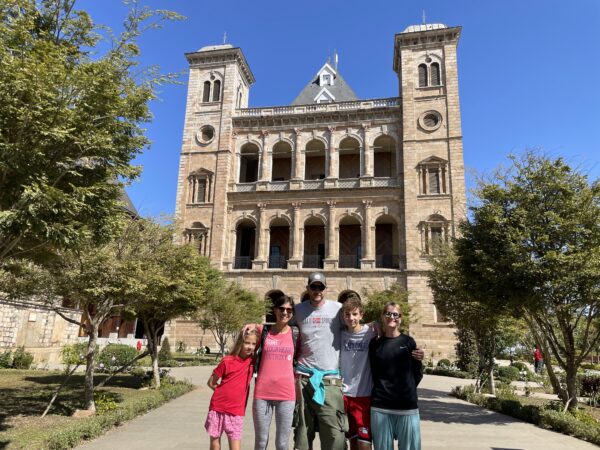
The Majesty of the Rova: The Rova, also known as the Queen’s Palace, was once the residence of the Merina monarchy and stands as a symbol of Madagascar’s royal past. Although the complex was severely damaged by a fire in 1995, restoration efforts have been ongoing, and it remains a fascinating place to visit. We walked through the palace grounds, marveling at the architecture and learning about the history of the Merina kings and queens who once ruled from this very spot.
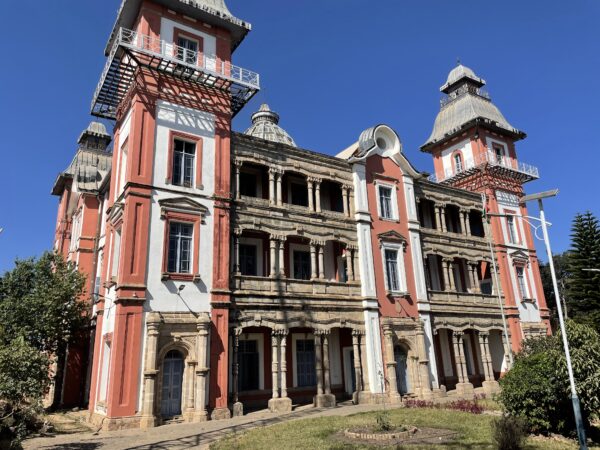
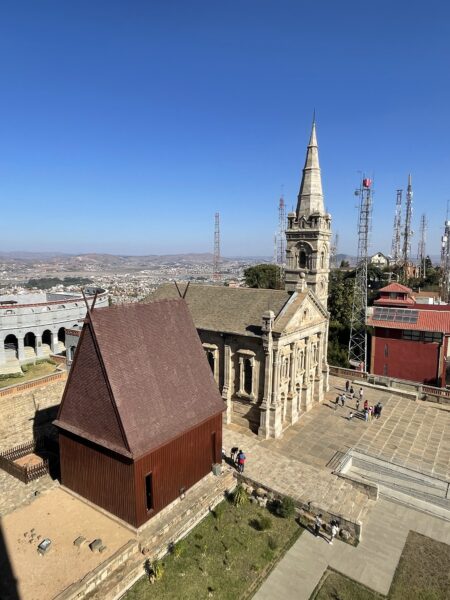
The views from the Rova are breathtaking, offering a panoramic vista of Antananarivo sprawling out below. It’s a perfect place to reflect on the city’s history and take in its unique blend of traditional and modern elements.
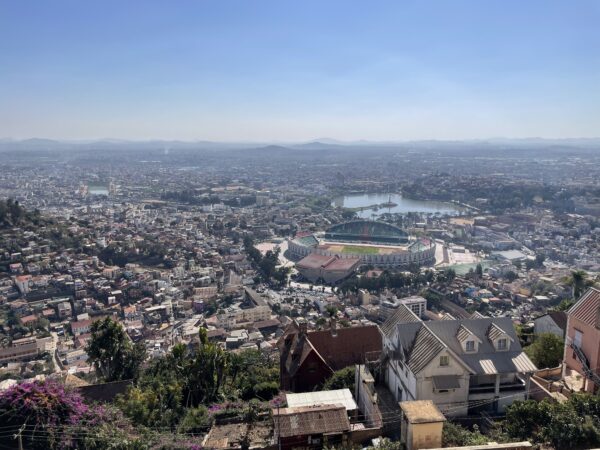
✓ Tip:
- The Rova can get quite busy, so visiting early in the morning or later in the afternoon can help you avoid the crowds. Hiring a local guide is highly recommended, as they can provide detailed insights into the history and significance of the site.
A Taste of Antananarivo’s Local Culture
Our second day in Antananarivo was more relaxed, allowing us to soak up the local culture before our flight home. We started the day with a leisurely stroll through Analakely Market, one of the city’s largest and most vibrant markets.
Analakely Market: Walking through the market was an assault on the senses—in the best possible way. The market buzzes with activity, offering everything from fresh produce and spices to traditional crafts and souvenirs. We couldn’t resist picking up a few handmade items to bring home as reminders of our trip.
✓ Tip:
- Bargaining is expected at the market, so don’t hesitate to haggle for a better price. However, remember to do so with a smile and respect for the vendors.
Culinary Delights: No visit to Antananarivo would be complete without sampling some local cuisine. For lunch, we opted for a traditional Malagasy meal at a local restaurant. We feasted on Romazava, a delicious beef stew with greens, and Ravitoto, a dish made with crushed cassava leaves and pork. The flavors were rich and comforting, a true taste of Madagascar.
✓ Tips:
- Transportation: Traffic in Antananarivo can be hectic, so plan your travel time accordingly. Taxis are the most convenient way to get around, but make sure to agree on the fare before starting your journey.
- Language: While French is widely spoken, a few words in Malagasy can go a long way in connecting with the locals. Simple greetings like “Salama” (Hello) and “Misaotra” (Thank you) are always appreciated.
- Safety: Like any large city, Antananarivo has areas where it’s wise to be cautious. Stick to well-lit, busy streets, especially after dark, and avoid displaying valuables.
- Currency: The local currency is the Malagasy Ariary (MGA). It’s advisable to carry cash, as credit cards are not widely accepted outside major hotels and restaurants.
- If you’re a foodie, consider joining a guided food tour to explore the city’s culinary scene in depth. It’s a great way to discover hidden gems and learn more about Malagasy cuisine.
- Keep an eye on your belongings while walking around Lac Anosy, as the area can get crowded, especially in the evenings. It’s a lovely spot to visit, but it’s always best to stay vigilant
Reflections on Our Journey
Our two days in Antananarivo were the perfect way to wrap up our Madagascar adventure. From the inspiring visit to Akamasoa to the historical exploration of the Rova, we left the city with a deep appreciation for its culture, history, and resilience. While our time was short, Antananarivo’s vibrant energy and rich heritage left a lasting impression, making it a fitting conclusion to our unforgettable trip to Madagascar.
If you ever find yourself in Madagascar, don’t overlook Antananarivo. Whether you’re drawn to its historical sites, lively markets, or simply want to experience the local culture, the capital has something to offer every traveler. Safe travels, and until next time, Madagascar!

